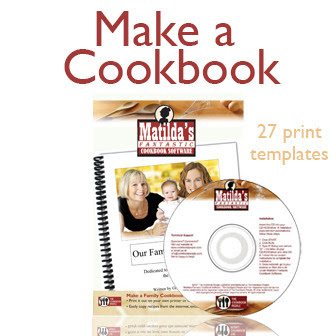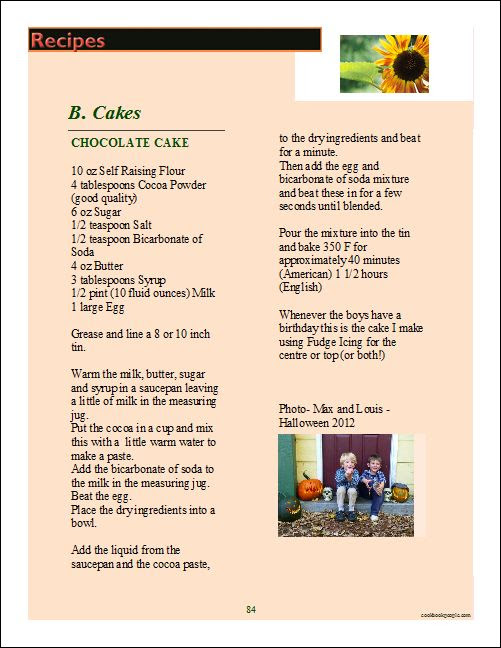Don’t you just love to watch those television shows about different people’s lives? By adding biographical stories about relatives to your family recipe cookbook, you can create your own mini-series of sorts using characters from your own family history! Just imagine the amazement of family members when they find out Great Uncle Jack was a circus clown and a cross-dresser!
You probably know that many best-selling biographies (usually of the rich and famous) can span several volumes. In your family recipe cookbook, the biographies will be simple short stories about the people whose recipes are included in your cookbook, or about people in the family who loved the recipes. (Or whomever you want, really.)
Here are some ideas to get your writing juices flowing for family biographies in your family recipe cookbook:
1. Ask Questions
Find out more (if possible) about the subject of your family bio. The person’s thoughts about a variety of topics can prove to be priceless to future generations, as well as fill in gaps in popular history. Ask about:
– Favorite holidays and why
– Childhood memories, popular fads
– Military service
– Values, beliefs, and dreams
– Favorite candy and ice cream
– Happy experiences, relationships, significant accomplishments
– Favorite meals, movies, pets, clothing styles
– Vacations and travel
– Teen pranks, embarrassing moments
– Hobbies and musical interests
– Admired heroes, and special honors or awards
– Memorable firsts, and feelings about major news events
– Words of wisdom for others
2. Do Some Research
Talk to relatives about relatives! This can sometimes create a common thread of comment from several family members, which can give you a better perspective.
You can also search for information about your relatives online by typing names into the search bar. (Be careful that you get the right relative). Letters, diaries, newspaper clippings, and family scrapbooks are also great sources of information. In the case of someone who has passed away, you can cut and paste in their obituary in the cookbook software’s People section. I did this recently when re-creating an old cookbook for my local historical society, and it worked out great.
3. Make an Outline
To help you focus on what to write, it is helpful to make an informal outline for each person so you can decide if more information is needed. List the stories or anecdotes you know, or have been told about each relative. Be sure to list any available photos that can be included.
4. Write What You Know, Get What You Don’t
Start writing about the person you know best or have the most information about. Remember, your purpose of a family bio is to present a brief recognizable sketch of your family member so others can immediately recognize the person’s “essence.”
You’ll want to include the basic facts of when he or she was born and other important dates, but chronological order is not as important as capturing the person’s character.
If you have too much information, narrow the focus of the family bio. Since this is a cookbook, perhaps discussing the person’s favorite recipes and cooking style would be useful. Always check your facts and dates.
Think of a theme. For example, if a relative is known for her sense of humor, try to include a story she told that made you laugh.
Of course, these bio-writing ideas are not intended for you to drop your family recipe cookbook project and write a best seller. Just some short loving paragraphs will do. But who knows, you might find enough family intrigue for a movie!
Happy cookbooking,
Erin
Organize your family cookbook using our cookbook software.
Like this:
Like Loading...




























